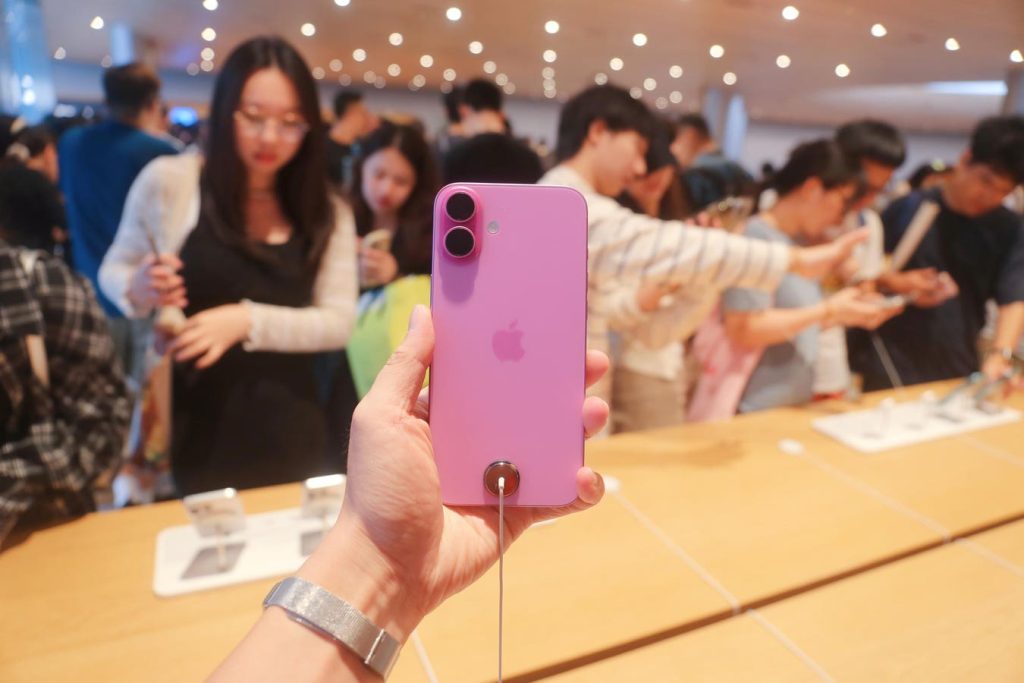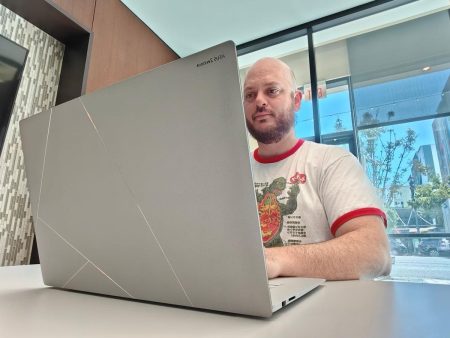Taking a look back at this week’s news and headlines from Apple, including leaked iPhone 17 specs, disappointing iPhone 16 reviews, weak iPhone 16 Pro sales, latest iOS bugfixes, Apple’s spare parts pairing tool, measuring the battery saver, and a new library in Apple Music Classic.
Apple Loop is here to remind you of a few of the many discussions around Apple in the last seven days. You can also read my weekly digest of Android news here on Forbes.
Speeding Up The iPhone 17 Display
As well as dropping the iPhone Plus with its larger display for a thinner iPhone Air, Apple looks set to finally bring a faster refreshing to the vanilla iPhone models. The details come from noted supply chain analyst Ross Young of Display Supply Chain Consultants:
“ProMotion would also allow the iPhone 17 and iPhone 17 Air displays to ramp down to a more power-efficient refresh rate. iPhone 13 Pro models can ramp down to 10Hz, while iPhone 14 Pro through iPhone 16 Pro models can go as low as 1Hz, allowing for an always-on display that shows various Lock Screen elements even when the device is locked. It is unclear if the iPhone 17 and iPhone 17 Air would ramp down to 10Hz or 1Hz.”
(DSCC via MacRumors).
Brickbats And Bouquets For The iPhone 16
With the iPhone 16 family now on sale for over a week, Apple’s latest smartphone is delighting its dedicated fanbase, but for many, the lack of notable updates is a disappointment. I’ve summed up the mood around the iPhone 16 family, including the iPhone 16 Pro, here on Forbes:
“The specifications may be higher than the iPhone 15 models they replace, but they are not significantly higher. The display can go a little dimmer and a little brighter as required. The A18 Pro chipset runs faster than the iPhone 15 Pro’s A17 Pro, which was already enough to cope with most of the phone’s demands. Apple has increased the memory with a view to supporting new AI tools, and the battery life when watching videos has increased.”
(Forbes).
Where Are The iPhone Customers?
The critical discussion of the iPhone 16 family is being mirrored by the public. A recent survey by Apple commentator Ming-Chi Kuo shows that sales of the iPhone 16 Pro and 16 Pro Max are down on expectation; it’s the vanilla 16 and 16 Plus that are keeping the numbers high, albeit frothy:
“It seems that Apple misread what consumers want – it had big hopes for the iPhone 16 Pro Max, but instead the model is struggling. It will probably still end up the top seller of the four, though. Kuo speculated that the delay of Apple Intelligence kept pre-orders for the two iPhone Pro models down and sales will improve once that arrives (and the upcoming holiday season will help too). One way or another, the Q1 2025 report from Apple is going to be an interesting one.”
(GSM Arena).
Incoming iOS BugFix
Ahead of the first major jump to iOS 18.1 in mid October—which will include the first public release of Apple’s generative AI tools—several bugs need to be immediately addressed. iOS 18.0.1 is expected next week and should patch critical issues for the iPhone, as well as an iPadOS to address similar concerns on Apple’s tablet:
“…t’s though that the touchscreen issue found on some iPhone 16 and older models could be addressed as part of the purpose. There have been other issues reported, such as one in Messages when someone shares a Watch face with you in an iPhone Message. If you reply to the thread, it can lead to the iPhone crashing repeatedly, both for the sender and recipient of the message.”
(Forbes).
New Parts Pairing Tool Released
Apple has controversially tied individual iPhone components to each device, limiting or blocking its functionality if replaced without authorisation from Apple. That issue has been partially addressed this week with the release of a new pairing tool for third-party repairers. While major replacements, such as the logic board, are not possible, smaller components are. These are the typical components you might replace at a High Street repair shop:
“The good news is that repairs at iFixit and the Phone Repair Guru have found that it is possible to reuse some parts on an iPhone 15 running iOS 18. The new repair assistant means it is possible to calibrate new components on-device without an Apple store’s involvement. The battery, back glass panel and rear cameras appear to calibrate on the device when swapped between two of the same iPhones.”
(Forbes).
Eighty Percent Or Bust
Apple included options to improve battery health with the iPhone 15, offering a compelling story if you limited the moments you put a full charge into your smartphone. Juli Clover kept the 80 percent setting on for the whole year. How much of a difference has it made compared to her colleagues?
“I don’t have a lot of data points for comparison, but it does seem that limiting the charge to 80 percent kept my maximum battery capacity higher than what my co-workers are seeing, but there isn’t a major difference. I have four percent more battery at 28 more cycles, and I’m not sure suffering through an 80 percent battery limit for 12 months was ultimately worth it.
“It’s possible that the real gains from an 80 percent limit will come in two or three years rather than a single year, and I’ll keep it limited to 80 percent to see the longer term impact.”
(MacRumors).
And Finally…
Apple Music Classical has picked up a significant update… liner notes. While they can’t be downloaded or saved outside of the app, the addition of more than 50,000 digital booklets will offer more background on all aspects of the music you listen to:
“Over 50,000 album booklets are now available on Apple Music Classical. These feature in-depth liner notes and translations as part of an ongoing expansion of Apple Music Classical…The addition of over 50,000 digital album booklets offers multi-language liner notes, composer biographies, information about the orchestra, conductors, soloists, and where relevant, sung texts and opera libretti.”
(Gramophone).
Apple Loop brings you seven days worth of highlights every weekend here on Forbes. Don’t forget to follow me so you don’t miss any coverage in the future. Last week’s Apple Loop can be read here, or this week’s edition of Loop’s sister column, Android Circuit, is also available on Forbes.
Read the full article here






